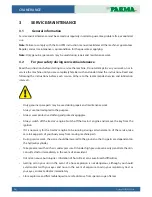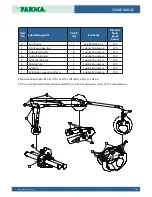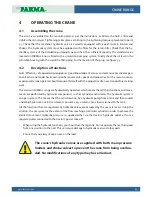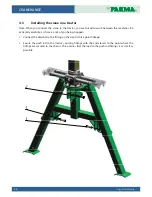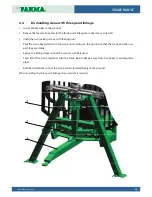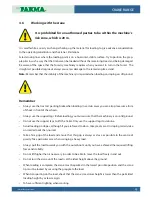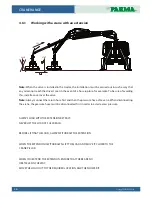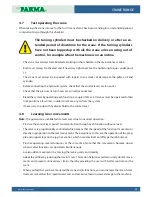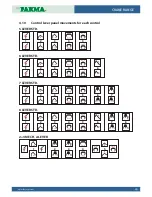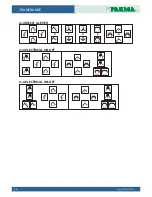
CRANE RANGE
www.forsmw.com
27
4.7
Test operating the crane
When taking the crane into use for the first time or after it has been standing for an extended period, it
is important to go through this checklist.
The turning cylinders must be checked on delivery or after an ex-
tended period of downtime for the crane. If the turning cylinders
have not been topped up with oil, the crane arm can swing out of
control, for example when the machine is on an incline.
• The crane must always be lubricated according to the schedule in the maintenance section.
• Bolts must always be checked and if necessary tightened. See the tightening torques under point
3.5.
• The crane must always be inspected with regard to any cracks or damage to the pillar, arm and
cylinders.
• Before connecting the hydraulic system, check that the control levers are in neutral.
• Check that the pressure/return hoses are correctly connected.
• Bleed the system by operating each function a couple of times. All cranes must be operated to their
limit positions a few times in order to remove any air from the system.
• If necessary, top up with hydraulic fluid to the correct level.
4.8
Learning lever movements
Note: The guarantee is invalidated if a fault arises due to incorrect operation.
• Practice the control lever panel’s movements. Run through each function without a load.
• The valves are proportionally controlled, which means that the speed of the function’s movement is
directly in proportion to the lever movement. The exceptions to this are the operation of the grap-
ple and support legs on the joystick control, which have electrical on/off-type thumb buttons.
• Practice operating several functions at the same time. Note that the movements become slower
when several functions are operated simultaneously.
• Avoid sudden movements by moving the levers gently and steadily.
• Adapt the oil flow by reducing the tractor’s revs. This action helps to avoid excessively violent move-
ments and prevents unnecessary strains, thereby providing the user with better control over the
work.
• When you feel that you have mastered the crane and its functions, you can increase the rate of work.
However, remember that rapid movements and excessive loads increase damage to the machine.


